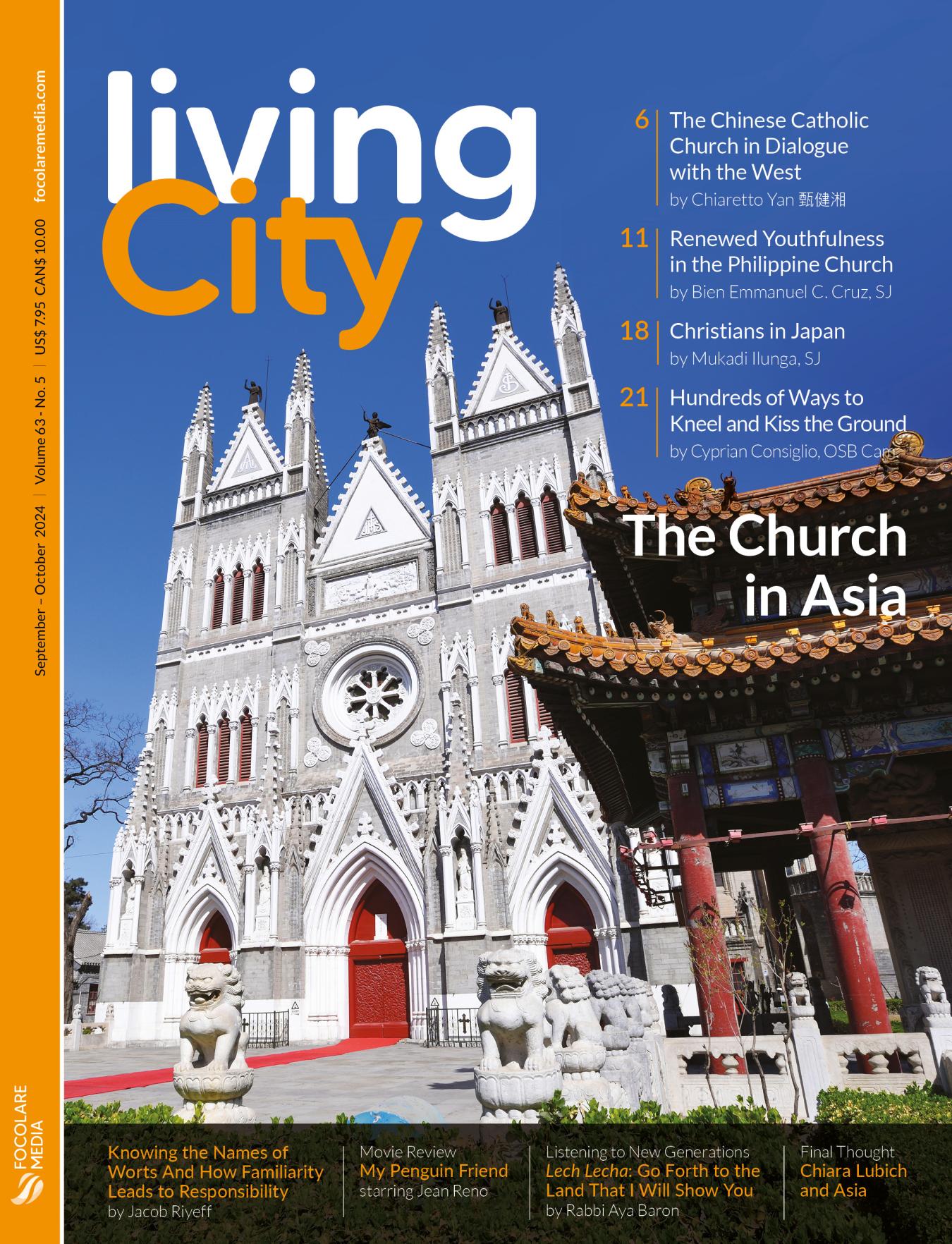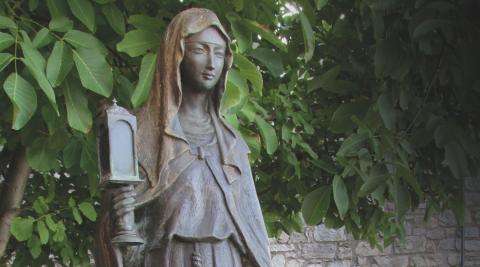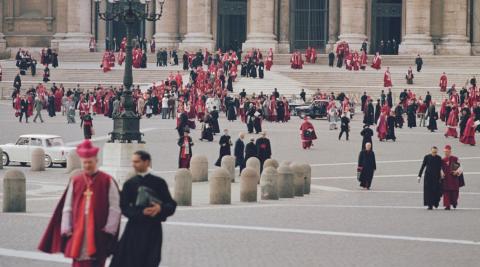
Photo from loppiano.it
My earliest memories of Indian mythology are the stories of the Rakshasa (a race of demons in Hindu mythology), Bakasura, and Kumbhakarna my mother told me as a child, and other stories from the Ramayana and the Mahabharata. When I could read for myself, the comic book versions published by Amar Chitra Katha became my favorites. These unraveled for me a wonderful world of the past. As I grew, I realized that being Catholic in no way prevented me from being Indian and living my culture and loving my nation, India.
My interest in history and English further fueled reading of ancient texts: a wide range of literature and non-fiction that helped me understand my roots. In school, we were friends and interacted with children of all faiths and didn’t consciously differentiate between those who were different. I remember feeling sad for a Muslim friend who started fasting when we were in class 7, thinking she is too young to be doing this. But she was adamant and I admired the self-control and spirit of sacrifice that she so graciously displayed. I remember the generosity of another Hindu friend whose mother sent snacks so that many of us could eat together with her during recess. Although now I refer to them as Muslim and Hindu, I didn’t think of these labels in childhood.
I was brought up in a very staunch Catholic family: going to church every day, saying the rosary, and morning and evening prayers. This, however, did not stop me from questioning whether I was a Catholic by birth or by choice. This made me learn more about my faith and through personal encounters with Jesus, I chose him as the Lord of my life.
A large part of my self-discovery as a Catholic was thanks to the writings and thoughts of Chiara Lubich. Her radical example of living the Gospel and saying her “yes” to God in our contemporary world made me make a choice every morning to do God’s will in what I thought, said, and did. And slowly as I matured and grew in faith, each day I had a conversation with God about everything that was happening in me and about me.
When living in a multifaith society, dialogue with people who have different beliefs and faiths is intrinsic, part of daily living. Common people of different faiths have been living peacefully together for a long time in this land. Common people of different faiths are friends, neighbors, share joys, sorrows, recipes, and gossip. We respect other’s faiths and beliefs and participate joyfully in each other’s festivals and celebrations.
My first personal experience of religious disharmony was in 1992 during the Mumbai riots. We could see areas burning in the distance from our terrace. Then a young Muslim boy sought refuge after witnessing the looting and burning of his relatives’ home in one of the riot-struck areas. He fled and came to stay at his brother’s locked house, next door to ours. We looked out for him, as he was alone and frightened, until finally he could return safely to his home in the south.
These riots—which were in the aftermath of the demolition of the Babri masjid in Ayodhya—were the first in a series of incidents that slowly led to the eroding of the secular fabric. First, Muslims were targeted, but slowly and surely the harassment spread to other communities. An aggressive majority frightens all minorities.
For example, the Christian missionary, Graham Staines and his two minor sons were burned alive while sleeping in a forest clearing. This was a barbaric act that showed the lengths to which Hindu radicals could go. Since then, killings and attacks of minorities and their places of worship continue to take place with impunity. This is disturbing as isolated groups continue to feel threatened and right-thinking people cower. As a common person of a minority community, I will tell you that these events feel sinister.
But the thoughts and writings of Chiara make me think differently. I remember attending meetings for the Focolare community where Chiara’s thoughts on interreligious dialogue were shared. Also, the Second Vatican Council’s openness to respectful dialogue as a way to build relationships between people of different religions was discussed, as well as ways to do it practically. This was a new understanding of the goal of the Ideal: May they all be one.
This piqued my curiosity and made me introspect whether I really saw all people as brothers and sisters. And I discovered that although I had not consciously differentiated among people of different religions, I had reservations about people as a whole. I had family members who professed different faiths and they were dear to me, but it wasn’t the same for all who professed the same faith. The urge to belittle idol worship and rituals and beliefs that were not a part of my upbringing was within me. But gradually the urge to look at all as human first, made me take steps to correct my internal conversations by reading and listening to Chiara and the documents of Vatican II. And so, my conscious journey in dialogue began.
When living in a multifaith society, dialogue with people who have different beliefs and faiths is intrinsic, part of daily living
I started being invited to interreligious dialogue roundtables and seminars organized by the Focolare. At first, I didn’t really listen, but slowly and surely I started thinking about it.
Let’s take the Golden Rule: “Do unto others as you would have them do unto you.” (Matthew 7:12) “Others” includes all people; there is no qualifying word for “others.” So, this rule did not apply to a specific group. I have to practice this with everyone. How can I do that?
I first attempted to study Hinduism, which is the majority religion here. I enrolled for a course but was unable to really do it. I then started reading about Hinduism and after the Google revolution it wasn’t difficult to find out more. And so this quest began.
I enrolled in BIRD (Basics of Inter-Religious Dialogue), a course run by the Archdiocese of Mumbai. I also became a member of the Archdiocesan Commission on Inter-Religious Dialogue and began to actively associate with different groups of people wanting to create peace and build unity among those of diverse beliefs through initiatives in academia, culture, ecology, civic, and political issues.
During the pandemic I participated in a Hindu-Christian dialogue course studying mystics from both these streams of belief. It was a very enriching and thought-provoking revelation to learn about all of those who dared to be so radical and live life in total surrender to God’s will.
This learning also brought about more opportunities, as when I was asked to present a plenary session paper at a conference on “Women in Religion: Exploring Dimensions of Inter-religious Dialogue.” During my research, I came across remarkable people from various faiths who were open and cherished universal brotherhood, and went beyond tolerance to embrace the other.
But the most profound experience thus far has been the interfaith meeting: “One Human Family: In a time of divisions, now is when dialogue matters,” organized by the Focolare Movement’s Centre for Dialogue from May 31 to June 4, 2024 at Castel Gondolfo, Rome. This gathering of more than 400 people from across the world, representing different faith groups as religious leaders and lay believers, of different cultures, from diverse backgrounds and professions, different strata of society, speaking various languages and belonging to many age groups, came together in a cordial relationship modelled on a single human family. There, I truly glimpsed the reality of Jesus’ words: “May they all be one.”
If you enjoyed this article, you might like...













